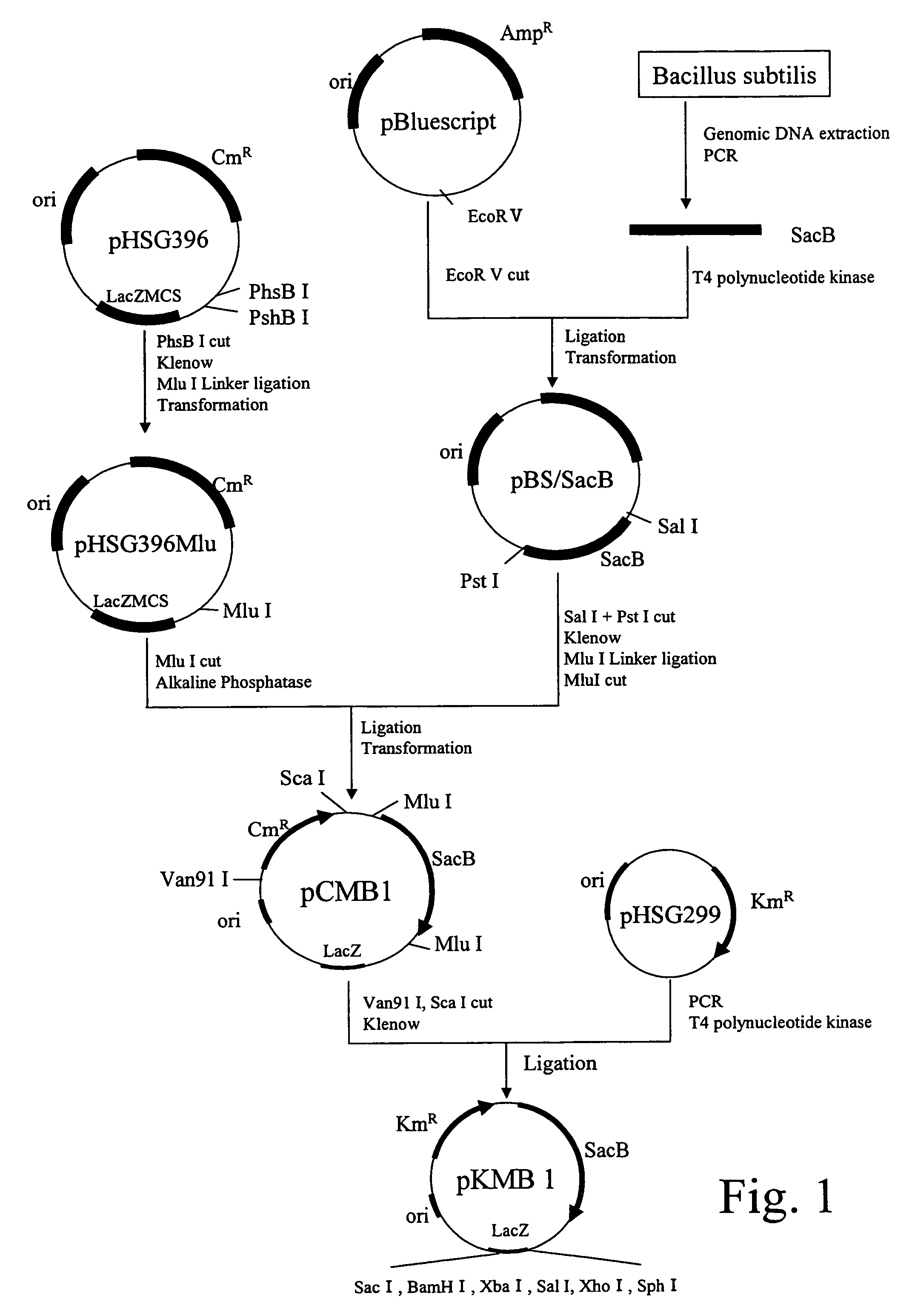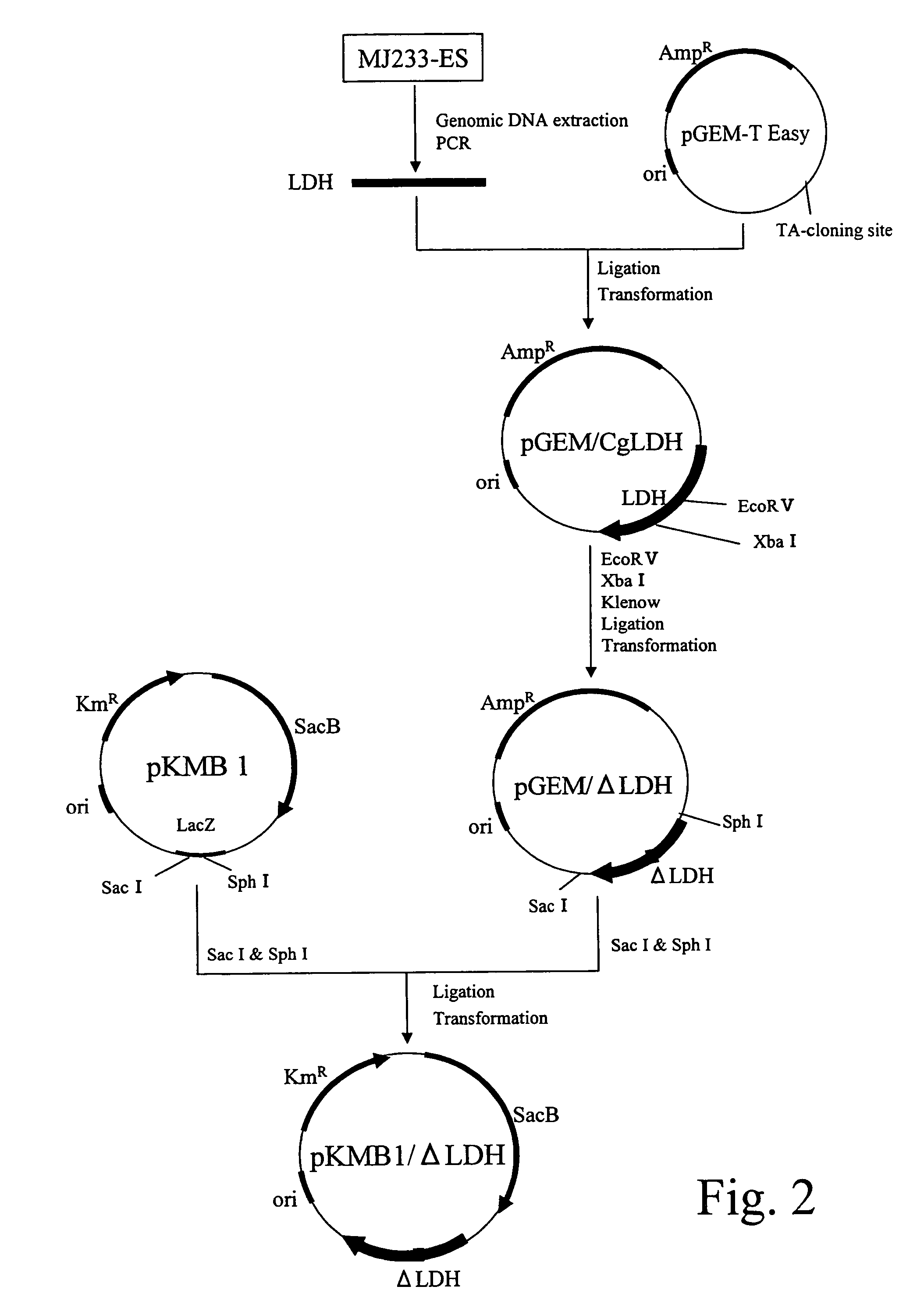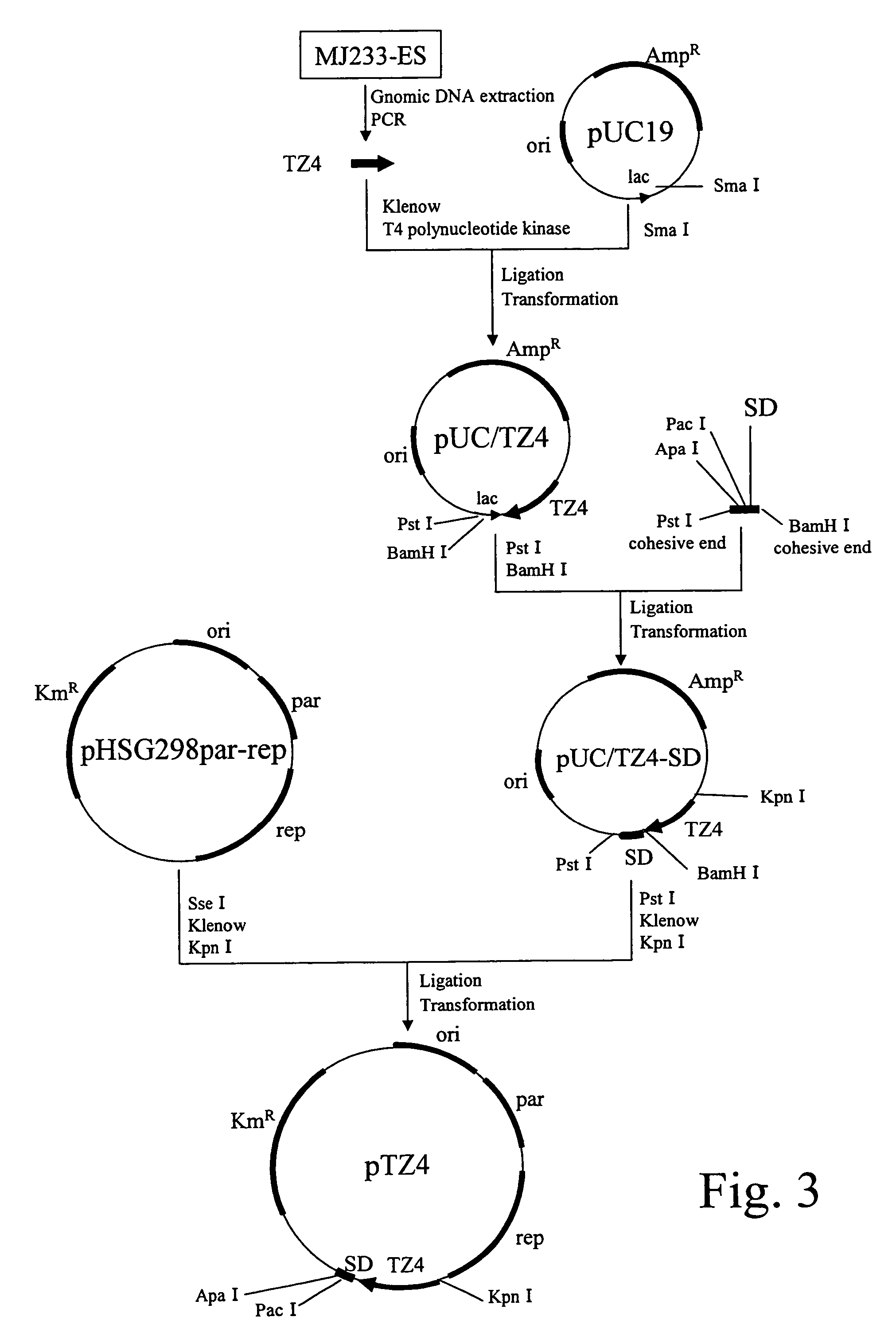Method of producing succinic acid with bacterium comprising a modified fumarate reductase gene or a modified succinate dehydrogenase gene
a technology of succinic acid and bacterium, which is applied in the field of production of succinic acid using bacteria, can solve the problems of increased culture cost, increased purification cost for separating products, and uneconomic effect, and achieves the effect of producing succinic acid with higher productivity
- Summary
- Abstract
- Description
- Claims
- Application Information
AI Technical Summary
Benefits of technology
Problems solved by technology
Method used
Image
Examples
example 1
Construction of a Gene Disruption Vector
(A) Extraction of Bacillus subtilis Genomic DNA
[0076]Bacillus subtilis ISW1214 was cultured until a late logarithmic growth phase in a 10 mL LB medium [composition: 10 g of tryptone, 5 g of yeast extract, and 5 g of NaCl dissolved in 1 L of distilled water], and the bacterial cells were collected. The obtained bacterial cells were suspended in 0.15 mL of 10 mM NaCl / 20 mM Tris buffer (pH of 8.0) / 1 mM EDTA.2Na containing 10 mg / mL of lysozyme.
[0077]Then, proteinase K was added to the suspension at a final concentration of 100 μg / mL, and maintained at 37° C. for 1 hour. Then, sodium dodecyl sulfate solution was added thereto at a final concentration of 0.5%, and maintained at 50° C. for 6 hours for lysis. To this lysate, an equal amount of a phenol / chloroform solution was added, and shaken slowly at room temperature for 10 minutes. Then, the total suspension was subjected to centrifugation (5,000×g, 20 minutes, 10 to 12° C.), and a supernatant fra...
example 2
Construction of LDH Gene-Disrupted Strain
(A) Extraction of a Genomic DNA from Brevibacterium flavum MJ233-ES Strain
[0092]The Brevibacterium flavum MJ-233 strain was cultured until the late stage of logarithmic growth phase in a 10 mL A medium (2 g of urea, 7 g of (NH4)2SO4, 0.5 g of KH2PO4, 0.5 g of K2HPO4, 0.5 g of MgSO4.7H2O, 6 mg of FeSO4.7H2O, 6 mg of MnSO4.4-5H2O, 200 μg of biotin, 100 μg of thiamine, 1 g of yeast extract, 1 g of casamino aid, and 20 g of glucose dissolved in 1 L of distilled water). The obtained bacterial cells were used to prepare a genomic DNA by the method described in the above section (A) of Example 1.
(B) Cloning of a Lactate Dehydrogenase Gene
[0093]A lactate dehydrogenase gene of MJ233 strain was obtained by performing PCR by using the DNA prepared in the above section (A) as a template; and using synthetic DNAs (SEQ ID NOS: 5 and 6) designed based on the nucleotide sequence of the gene described in JP11-206385A. The composition of the reaction solution ...
example 3
Construction of Expression Vector for Coryneform Bacterium
(A) Preparation of a Promoter Fragment for Coryneform Bacterium
[0112]A DNA fragment (hereinafter, referred to TZ4 promoter) shown in SEQ ID NO: 4 in JP07-95891A and reported to have high promoter activity in a coryneform bacterium was used. The promoter fragment was obtained by performing PCR by using the Brevibacterium flavum MJ233 genomic DNA prepared in the section (A) of Example 2 as a template; and using synthetic DNAs (SEQ ID NOS: 9 and 10) designed based on a sequence described as SEQ ID NO: 4 in JP07-95891A, as primers.
[0113]The composition of the reaction solution is as follows: 1 μL of the template DNA, 0.2 μL of PfxDNA polymerase (available from Invitrogen Japan K.K.), 1 time concentration of a supplied buffer, 0.3 μM of respective primers, 1 mM MgSO4, and 0.25 μM dNTPs were mixed, and a total volume of the reaction solution was adjusted to 20 μL.
[0114]Reaction temperature condition is as follows: The DNA Thermal C...
PUM
| Property | Measurement | Unit |
|---|---|---|
| pH | aaaaa | aaaaa |
| pH | aaaaa | aaaaa |
| concentration | aaaaa | aaaaa |
Abstract
Description
Claims
Application Information
 Login to View More
Login to View More - R&D
- Intellectual Property
- Life Sciences
- Materials
- Tech Scout
- Unparalleled Data Quality
- Higher Quality Content
- 60% Fewer Hallucinations
Browse by: Latest US Patents, China's latest patents, Technical Efficacy Thesaurus, Application Domain, Technology Topic, Popular Technical Reports.
© 2025 PatSnap. All rights reserved.Legal|Privacy policy|Modern Slavery Act Transparency Statement|Sitemap|About US| Contact US: help@patsnap.com



